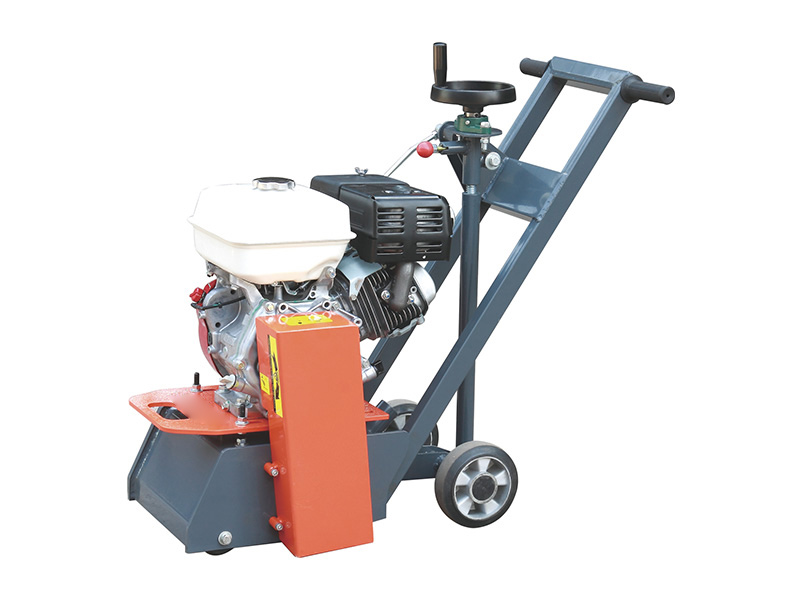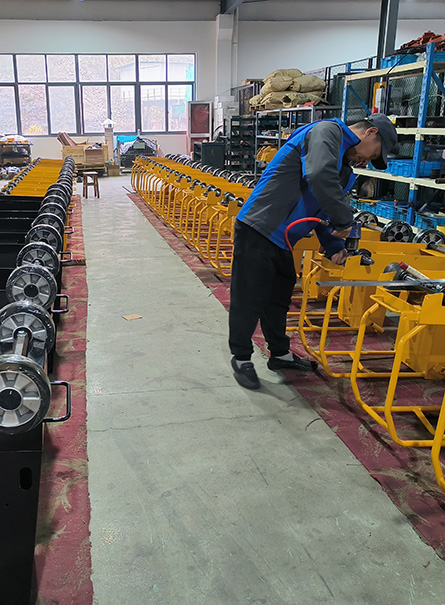HSM200/250 Scarifiers with 5.5HP/9HP Engine and Blade Bundle
Working Width(mm)
HSM200: 200
HSM250: 250
Engine Power(HP)
HSM200: 5.5
HSM250: 9HP Honda or Loncin
Weight
HSM200: 98
HSM250:110
Scarifiers, often referred to as surface planers or milling machines, are tools designed to scar or etch the surface of concrete using rotating cutting tools within a drum.
These machines are more aggressive and remove concrete more rapidly than grinders, due to the high-speed rotation and hammering action of the cutting wheels. They chip away at the concrete, creating textured surface profiles for various applications. The depth of cutting is adjustable in most models, with some capable of removing up to 1/4 inch of material in a single pass.
The design includes cutting wheels or flails affixed to shafts on a detachable drum. The number of shafts per drum varies depending on the machine, with models having more shafts capable of holding a greater number of cutters for intensified scarifying action and increased productivity.
The cutters, crafted from materials like tungsten carbide or hardened steel, come in various styles to cater to different needs. Selecting cutters with different diameters, widths, numbers of teeth, and tip designs (such as flat, sharp, or angled) allows for diverse outcomes, tailored to the specific material and desired end profile of the floor.
Scarifiers are employed for multiple tasks including light or heavy milling, removing coatings like floor tile mastics, adhesives, or epoxies, creating grooves in walkways for slip resistance, and leveling uneven concrete joints and surfaces.
When is it ideal to use a scarifier for surface preparation?
A scarifier is highly effective when:
A Concrete Surface Profile (CSP) of 4-5 is needed. The scarifying action is achieved through drum rotation using Tungsten Carbide cutters or flails. These flails act like miniature hammers, chipping away small pieces of concrete, resulting in a coarse surface that aids in the adhesion of certain coatings.
OR
More than a 1/4 inch of concrete needs to be removed. The flails are designed to chip away concrete by impacting the surface vertically. This makes scarifiers particularly effective in smoothing rough or uneven surfaces, commonly found at construction joints or cracks, by grinding down high spots to level them with the lower areas.
Utilizing a Concrete Scarifier: Methods and Attachments
Concrete scarifiers, with their versatile cutting wheels and drum configurations, are capable of executing a wide array of surface profiling tasks. These tasks include:
- Stripping away coatings, including tough floor tile mastics and rubbery or epoxy materials.
- Conducting light or intense milling.
- Creating grooves in walkways for slip resistance.
- Eliminating tripping hazards on sidewalks.
- Smoothing out misaligned concrete joints and uneven areas.
- Attachments for Scarifying Concrete
The majority of cutters for scarifiers are crafted from tungsten carbide or hardened steel and are available in various designs for diverse applications. Options include different sizes, widths, numbers of cutting teeth, and tip styles (like blunt or flat for robust removal, sharp for a milder scarifying effect, or angled for scraping purposes). Cutters are also offered in different quality grades, with top-tier grades offering extended durability and a more consistent finish. Manufacturers can advise on the most appropriate cutter style and grade for specific projects.
Guidelines for Using a Concrete Planer
To achieve varying finishes, adjust the spacing and pattern of the cutter assemblies on the scarifier. Closer spacing of the cutters results in a finer finish, whereas wider spacing yields a rougher texture. Some contractors prepare for different tasks by bringing drums equipped with various types of cutters and configurations.
Typically, a scarifier leaves a coarse finish and might produce ridges on the concrete surface. For projects requiring a smoother finish, additional grinding of the surface post-scarifying might be necessary.
While both tungsten carbide and steel cutters can undertake similar tasks, tungsten carbide versions are more robust and durable, making them suitable for high-production tasks or work on high-psi concrete. Steel cutters, though having a shorter lifespan, are more cost-effective.



